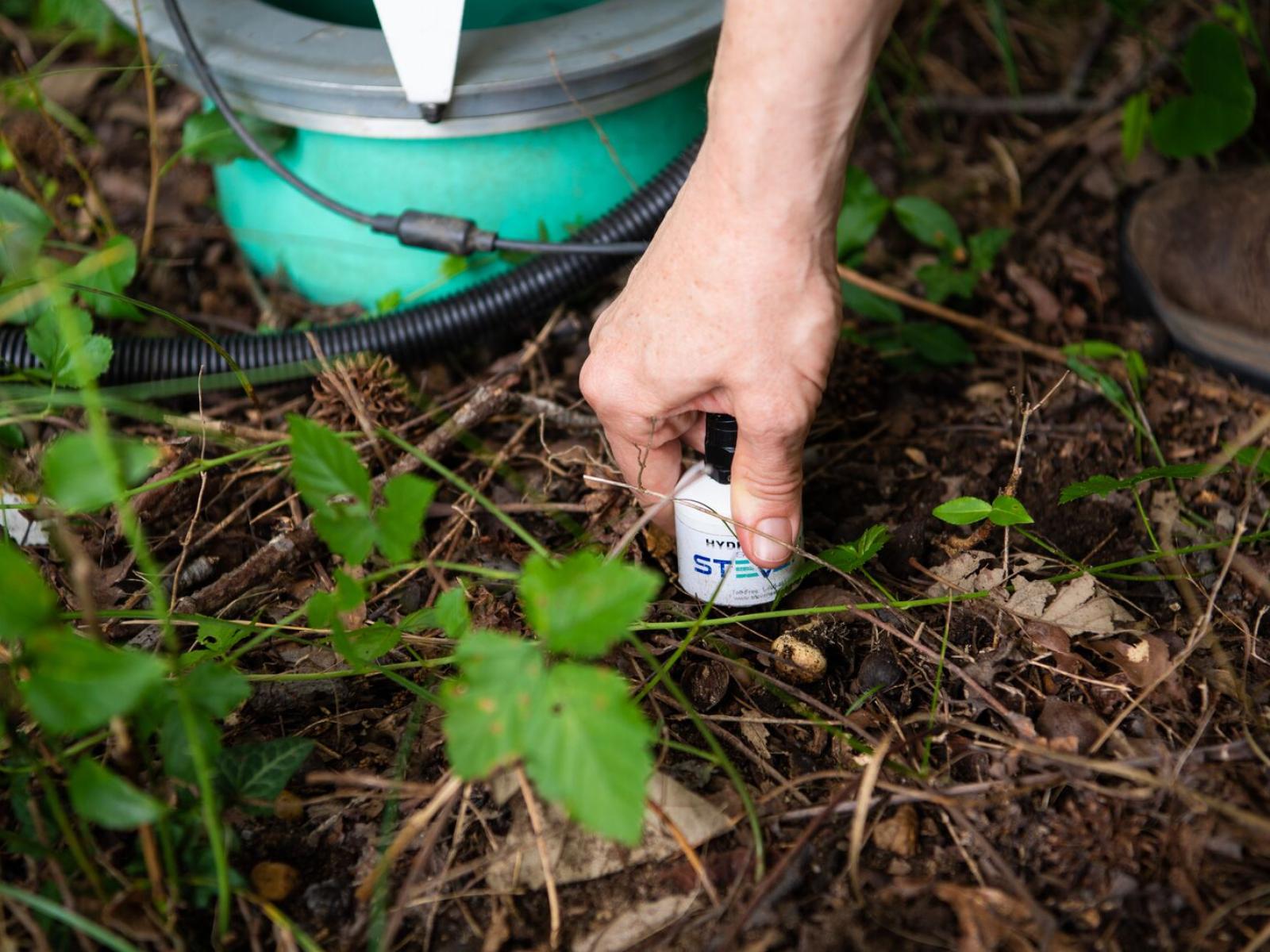For Understanding Soil Methane Flux, Two Techniques Are Better Than One
Combining field measurements and a rarely used laboratory technique provided novel insight into microbial processes that both create and dismantle methane in soil

To determine the role of soil moisture in regulating methane processes, measurements were made throughout the summer season alongside measurements of the flux of methane either into or out of the soil.
(Photo by Andrea Starr | Pacific Northwest National Laboratory)
The Science
Methane is a potent greenhouse gas that is naturally produced by microbes that live in damp soil. However, microbes can also eat methane, and in dry soil the combined action of many hungry microbes leads to a small, but measurable, decrease in atmospheric methane. Coastal ecosystems experiencing sea level rise are hotspots for the intersection of these two processes: wet soils producing methane and dry soils taking it up. As soils with no history of inundation are exposed to rising tides, it is unknown how the balance of methane production and consumption will change. Researchers used a combination of sophisticated laboratory incubations and field measurements to determine the role of microbial production and consumption of methane in soils with different exposure to tidal inundation.
The Impact
Findings showed that soils with no history of inundation produced methane in equal quantities to those that were typically moist. This indicates that coastal ecosystems will rapidly transition from methane sinks to sources as sea level rises. Additionally, findings showed the balance of methane production and consumption in extracted soils incubated in the laboratory differed from measurements made at the soil surface in the field. Incubated soil was able to consume more methane than it produced. Therefore, even in wet areas, the upper-most layer of soil can reduce the amount of methane that escapes into the atmosphere.
Summary
Soils both produce and consume methane (CH4), a potent greenhouse gas that contributes to climate change. In coastal forests, upland soils are shifting from being CH4 sinks to sources as sea levels rise, increasingly flooding soils with little prior inundation history. Ecosystem CH4 budgets are highly uncertain due in part to the difficulty of separating fluxes—movement of molecules between ecosystem components—measured at the soil surface into individual production and consumption processes that are likely to have different responses to future environmental conditions.
Researchers measured growing season CH4 fluxes from soil monoliths transplanted four years prior along an inundation and salinity gradient to determine how changes in abiotic conditions control CH4 flux rates. To parse net fluxes measured at the soil surface into their component gross rates, researchers paired field measurements with a stable isotope pool dilution incubation of surface soils. Throughout the growing season, net soil surface CH4 flux was positively correlated with soil moisture, with lowland-located soils tending toward CH4 sources and upland-located soils tending toward CH4 sinks. Transplanted soils’ fluxes were statistically identical to their native neighbors once microtopography-driven differences in soil moisture were controlled for.
The pool dilution experiment revealed that production and consumption rates were similar in upland and lowland surface soils, indicating most of the production likely occurs at depth in lowland soils. Both gross and net fluxes from transplanted soils showed no effect of soil origin after four years, suggesting low resistance of CH4 cycling to global change drivers. Our results indicate the strength of the coastal forest CH4 sink is likely to decrease in proportion to sea level rise.
PNNL Contact
Vanessa Bailey, Pacific Northwest National Laboratory, vanessa.bailey@pnnl.gov
Funding
This research is based on work supported by COMPASS-FME, a multi-institutional project supported by the Department of Energy, Office of Science, Biological and Environmental Research program as part of the Environmental System Science Program.
Related Links
Published: March 28, 2024
Kendalynn A. Morris, Mitchell Smith, Vanessa L. Bailey, Roberta Bittencourt-Peixoto, Donnie J. Day, Nora Hamovit, Anya M. Hopple, Jaehyun Lee, Kaizad F. Patel, Peter Regier, Stephanie J. Wilson, Stephanie A. Yarwood, Pat Megonigal, Ben Bond-Lamberty. Methane flux from transplanted soil monoliths depends on moisture, but not origin. Soil Biology and Biochemistry, Volume 193, 2024, 109296, ISSN 0038-0717, https://doi.org/10.1016/j.soilbio.2023.109296